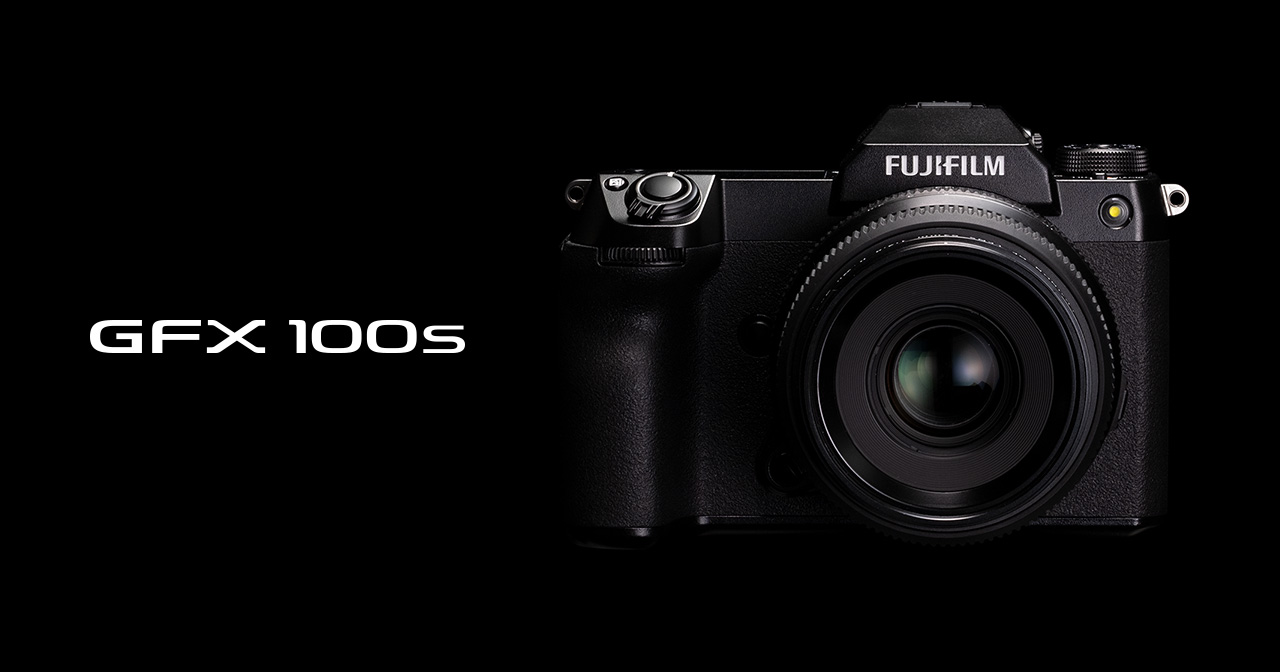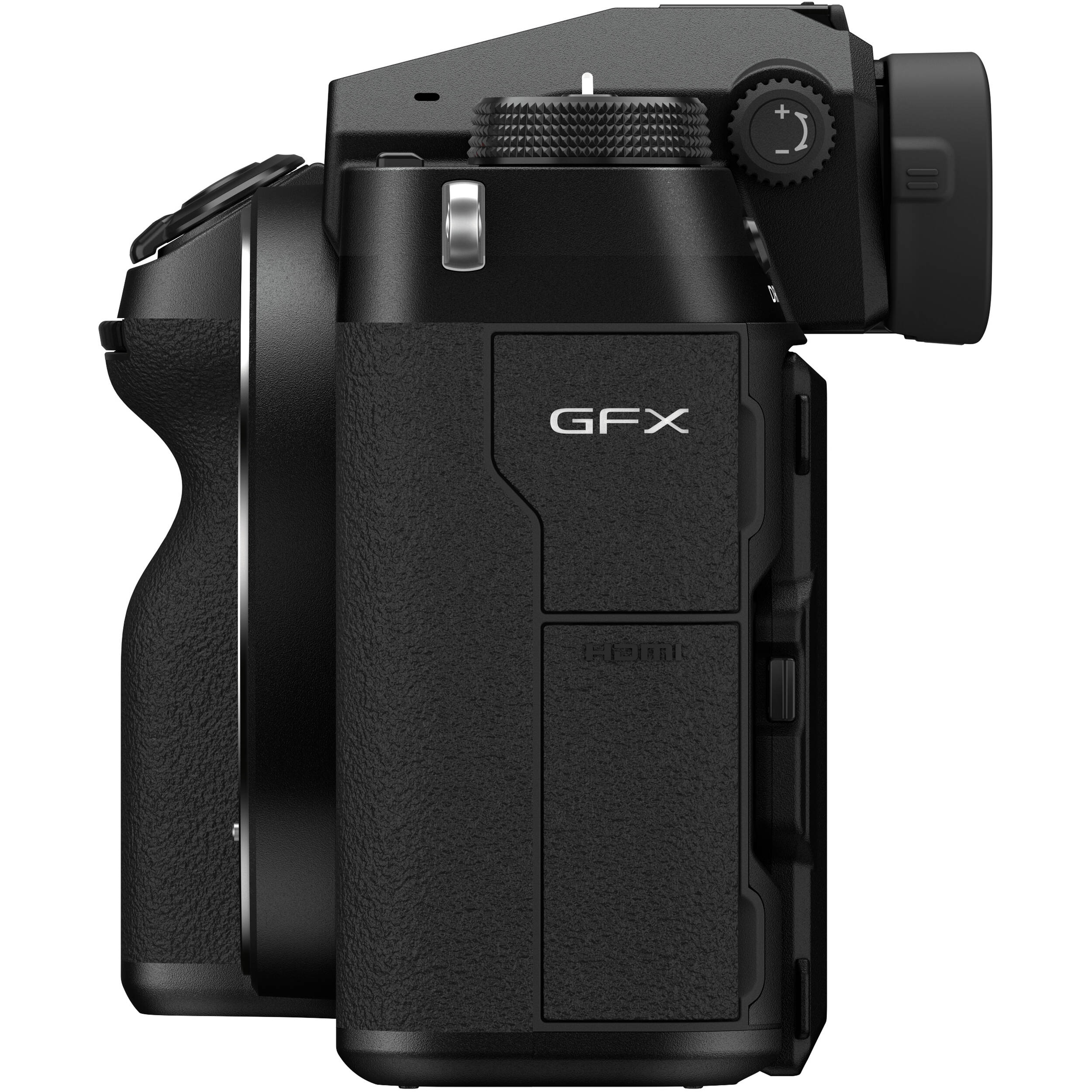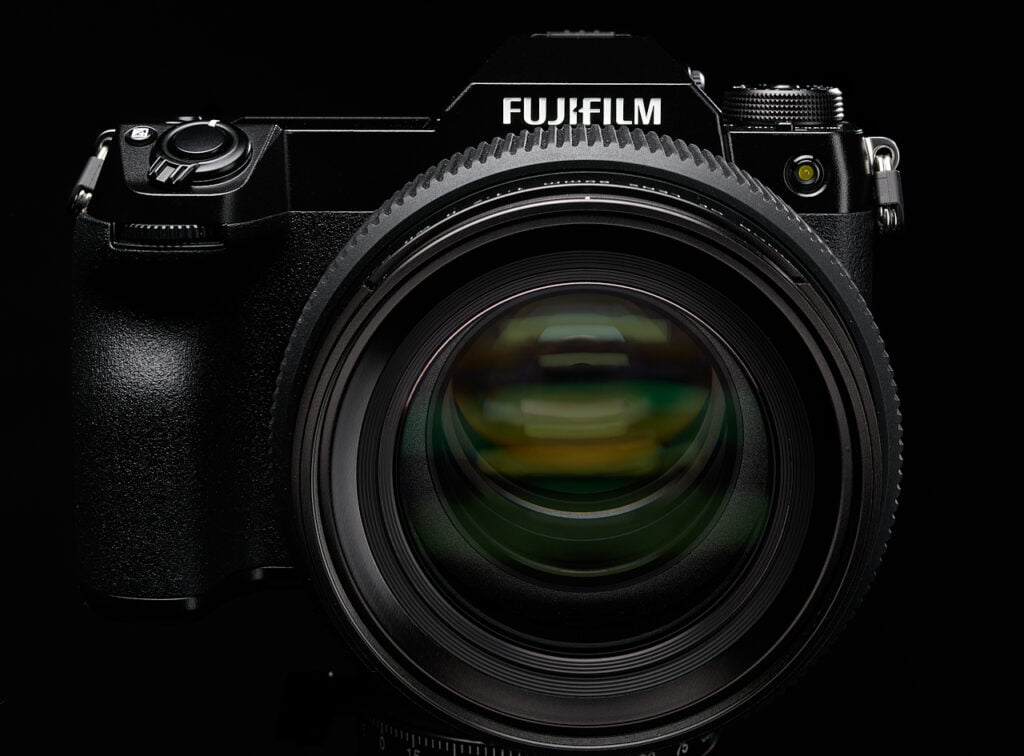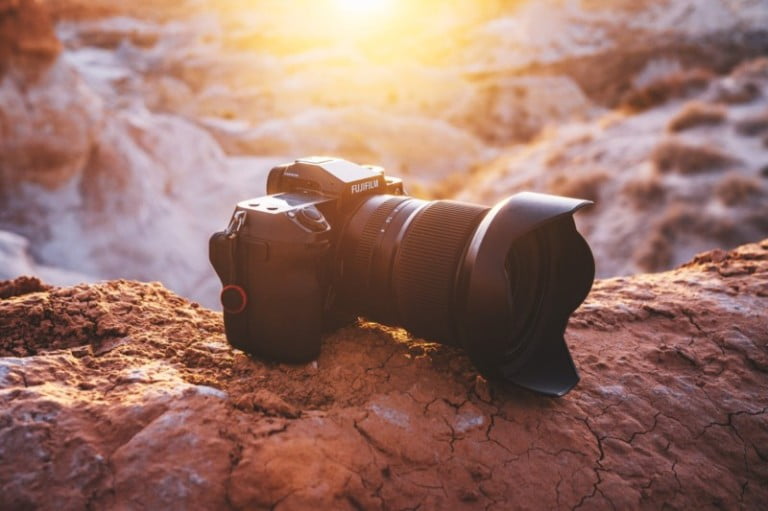The Fujifilm GFX 100S is another add-on to their medium format lineup: a 100MP sensor in a single-grip DSLR styled body. The GFX 100S carries the 102MP BSI CMOS sensor from the original GFX 100 mounted within a smaller, more powerful image stabilization mechanism. Fujifilm has created a very powerful camera at a comparatively affordable price.

Key specifications.
:no_upscale()/cdn.vox-cdn.com/uploads/chorus_asset/file/22262647/600022058_PT06_GFX100S_top.jpg)
102MP BSI-CMOS 44 x 33mm medium format sensor, Image stabilization system rated at up to 6EV, Continuous shooting at up to 5 fps with C-AF, 4K video at up to 30p with HDMI output of 10-bit 4:2:2 or 12-bit Raw footage, Multi-shot 400MP mode for static subjects, 2.36M-dot rear touchscreen with two-axis tilt, Fixed 3.69M-dot OLED EVF with 0.77x equiv. magnification
Lossy, lossless or uncompressed Raw in 16 or 14-bit, Twin UHS-II SD card slots and NP-W235 battery, rated at 460 shots too.
Fujifilm has applied a lot of the downsizing efforts that went into its more rangefinder-like 50R camera here in the GFX 100S, resulting in a camera that’s appreciably smaller than the original GFX 50S and the dual-grip GFX 100. However, the company says that in contrast to the 50R, a DSLR-style body, with the viewfinder assembly on the top of the camera, was required in order to make the inclusion of an image stabilization system practical.

The GFX 100S has a control layout very similar to that of the original, dual-grip GFX 100, with a large LCD top plate display and a comparable number of custom buttons. A conventional mode dial and movie/stills switch replace the GFX 100’s button-within-a-dial arrangement on the camera’s left shoulder.
Core to the GFX 100S is the inclusion of in-body image stabilization. Just as Fujifilm has been able to continue to miniaturize the IS systems used in its X-H1, X-T4 and X-S10 models, it’s also been able to reduce the size of the mechanism from the original GFX 100 to allow it to fit in a smaller body.
Despite the size reduction, the new mechanism is more effective than the one that precedes it: rated to correct up to 6EV of shake. This is half a stop more than the GFX 100’s rating and is possible with more lenses, giving a rated 1EV improvement with most combinations. On top of this, the new system can synchronize with OIS lenses to maintain this level of correction even with longer focal lengths. This Sync IS system uses both lens and body IS to correct pitch and yaw, just as Panasonic, Olympus and Canon systems do.

The image stabilization mechanism is also used to provide a sixteen-shot high-resolution mode. This moves the sensor between each exposure, first to ensure that a red, green and blue pixel has been captured for each location, then to do the same again at a slight offset. This both boosts the chroma resolution and the overall pixel count of the image. However, in our experience with the GFX 100, we found that the lack of any motion correction means it really only works for completely static subjects, such as artwork reproduction.
Its lower profile makes it easy to nudge the AF point around or navigate menus without too much risk of accidentally pressing it inwards which, as before, resets the AF point or confirms the current menu setting.
The move to a smaller body format also sees the GFX 100S make use of a smaller battery, compared to the GFX 100. It uses the same W235 battery first introduced with the X-T4, which is a fair bit smaller than NP-T125 used in the previous GFX bodies. Despite the reduction in physical size and electrical capacity, the GFX 100S is rated for a pretty reasonable 460 shots per charge using the LCD, per CIPA standard tests.

Beyond this, much of what the GFX 100S offers is a match for its larger sibling: 102MP Raw files in 14 or 16 bit with a choice of lossy, lossless or no compression, DCI or UHD 4K video at up to 30p and up to 400Mbps, with the option to output uncompressed 10-bit 4:2:2 or a 12-bit Raw stream over HDMI. Impressively, for a camera with a 100MP sensor, the GFX 100S can shoot at up to 5 fps with continuous autofocus, despite the continued use of UHS-II SD card slots.
The GFX 100S uses a similar control approach to that of previous GFX cameras, primarily relying on its twin command dials for most control, and using an exposure compensation button rather than a dedicated dial (though, with a bit of work, you can assign it as an option when you press the rear dial).
The GFX 100S fits nicely in the hand, with a thin layer of dense rubber providing a good amount of traction to a well-shaped hand grip, though photographers with larger hands may find the middle-finger indentation a little too small and close to the front of the camera. The solid grip is important because although the camera is smaller than the likes of a Nikon D850, it can start to get quite heavy once you’ve mounted something like the GF 110mm F2 lens on the front.

The top display panel can be set to show either shooting information, a graphic representing shutter speed and ISO dials, or a histogram. The camera maintains separate settings for stills and video, and the display can be inverted to show black text on white if you find that clearer than white on black. A small ‘lamp’ button on the side of the viewfinder illuminates the panel for use in low light.
The GFX 100S, unlike the GFX 100 or GFX 50S, has a fixed built-in viewfinder. It’s a 3.69M-dot OLED panel with 0.77x magnification (with a 50mm equivalent lens mounted). This is a pretty big display with pretty decent resolution. ‘Boost’ modes in the camera’s power settings let you increase either the refresh rate or the resolution.
Dynamic range is also a match for the GFX 100. The larger sensor gives a boost over its full-frame rivals. If we compare high ISO images to ones shot using the same exposure at a lower ISO setting, we can see there’s very little difference, which suggests there’s very little electronic noise to be overcome by adding amplification. This opens up the option to keep the ISO setting down and brighten later, to avoid the reduction in dynamic range that typically occurs as you raise the ISO.

The GFX 100S’s autofocus system is very similar to those of the original GFX 100 and the X-T4, which means it’s better than earlier Fujifilms but looking more and more outdated in comparison to the cameras released since those models arrived.
Like the GFX100, the 100S is a surprisingly capable video camera. I say surprisingly because large sensors tend to mean large numbers of relatively large pixels which, absent any clever/expensive technologies, tend to count against fast readout speed. Fujifilm’s solution appears to be line-skipping: only reading certain lines out from the sensor, to speed up the process and reduce the rolling shutter effect. This gets it to a fairly reasonable 27ms for both its DCI and UHD 4K modes.
Starred Points.
Excellent image quality across the ISO range,, Exceptional detail levels, Very good tonal quality maintained into shadow regions, Choice of Raw compression, Image stabilization makes it easy to achieve full resolution, Comfortable ergonomics and decent level of button/dial customization, Relatively compact form factor, Impressive video capabilities, USB charging is convenient.
Not so Starred Stuff.
Autofocus performance varies significantly between lenses
Face/Eye AF not as reliable as its FF rivals
AF Tracking not as sticky
No tracking AF in video
Line-skipped video doesn’t give full sensor low-light performance
Comparatively low battery life
Viewfinder isn’t very high resolution.
Overall, this camera is a pretty good upgrade for other camera users, but the GFX 100 users, don’t need to bother about this camera, if you’re using the GFX 100 series or any other camera, I’d recommend not upgrading just because you want to but only upgrade if you think your camera is holding your potential back and you could do better with a new one.



